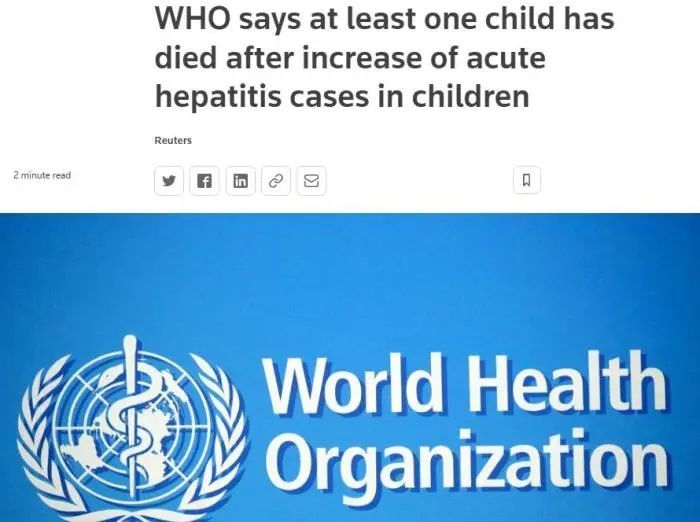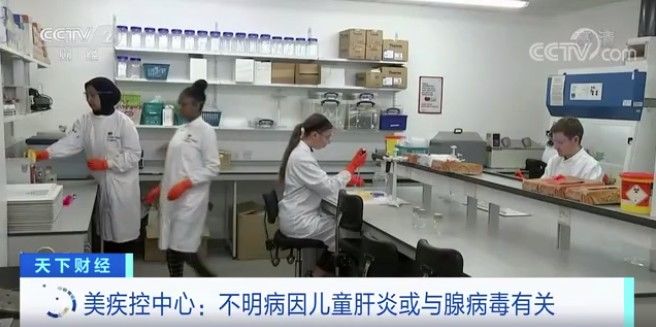According to Xinmin Evening News, recently, the United Kingdom, the United States, Spain and other places have reported cases of acute hepatitis of unknown cause in children. Japan’s Ministry of Health, Labour and Welfare announced on the 25th local time that the country also reported the first case of a child who may have this acute hepatitis.
The Japanese Ministry of Health, Labour and Welfare did not disclose the specific age and gender of the patient that day, only that the patient was under the age of 16. The Ministry of Health, Labour and Welfare said the patient’s symptoms met the World Health Organization’s definition of a suspected case of “acute severe hepatitis”. The patient has tested negative for SARS-CoV-2 and adenovirus, and has no history of liver transplantation.
Since cases of unexplained childhood hepatitis were first discovered in the United Kingdom, many countries around the world have reported such cases one after another. According to WHO data, as of the 21st of this month, a total of 169 cases of unexplained acute hepatitis have been detected in 12 countries, with symptoms including abdominal pain, diarrhea and vomiting, in addition to jaundice and elevated liver enzyme levels. The patients ranged in age from one month to 16 years old, and one person has died so far.
WHO also said that adenovirus was detected in 74 cases. Of these, 20 were infected with the new coronavirus, and 19 were infected with both the new coronavirus and adenovirus. As of April 23, about 10 percent of sick children required liver transplants.
In its risk assessment, WHO noted that adenovirus is currently considered a hypothesis of etiology, but this cannot fully explain the severity of clinical symptoms. Other influencing factors, such as the reduced level of adenovirus transmission during the COVID-19 pandemic, the increased susceptibility of young children, the possible emergence of a new type of adenovirus, and co-infection with SARS-CoV-2, also require further study.

Furthermore, since the vast majority of affected children are not vaccinated against COVID-19, hypotheses about side effects of the COVID-19 vaccine are not currently supported.
WHO is closely monitoring the situation and working with relevant parties including UK health authorities.
New coronavirus and adenovirus detected in some cases
Mira Chand, UK’s director of clinical and infection specialists, said that information gathered through investigations by authorities increasingly suggested that an increase in sudden-onset hepatitis in children was linked to adenovirus infection.
In these cases, laboratory tests have ruled out hepatitis A, B, C, D and E, while SARS-CoV-2 and adenovirus have been detected in some cases, the WHO said. The role of these viruses in pathogenesis is unclear. Overall, the etiology of these hepatitis cases is currently unknown and investigations are ongoing.

The “European Surveillance” article believes that even if the cause is adenovirus infection, it may be related to the new crown pandemic, because many young children have not been exposed to many common viruses in the outside world due to long-term isolation during the epidemic. When masks are removed and social distancing measures lifted, they become more vulnerable to infection from the outside world.
The U.S. Centers for Disease Control and Prevention also confirmed that all 9 children reported in the United States reported positive test results for adenovirus, of which 5 were confirmed to be adenovirus-41 positive. Adenoviruses are a common group of viruses that usually cause a range of mild illnesses, including colds, vomiting and diarrhea, but not usually hepatitis. Adenoviruses are an important cause of febrile illness in young children, most commonly causing upper respiratory syndrome, but also pneumonia. Rarely, it can cause diseases of the digestive system, eyes, genitourinary system and nervous system.
Adenoviruses are commonly spread from person to person and through contact with contaminated surfaces and through the respiratory tract. The most effective way to reduce the spread of adenovirus is to maintain good hand and respiratory hygiene and supervise young children to wash their hands thoroughly.
European and American experts pointed out that although mild hepatitis is quite common in children, the situation this time is significantly different. In the UK, some patients are in serious condition, and some even require liver transplantation. Experts say adenoviruses rarely cause severe hepatitis in healthy people. It is very rare for this to occur in children without serious underlying health problems.
Greek experts urge compliance with hygiene measures to take precautions
In response to the recent unexplained cases of childhood hepatitis, Martina Pagoni, president of the Athens Piraeus Doctors Association, called for strict adherence to hygiene measures, saying that hepatitis is a It is an infectious disease that needs to be controlled by certain means.
In an interview with local media, Martina said: “Hepatitis infection in young children is mainly in children under the age of 5-6, which worries us because in 10% of the sick children, we have to Transplants. Of course, they were all successful, but according to the data, one patient died.”
Martina stressed that there is no need to panic, as the current treatments and methods for hepatitis are well established. “Parents need to be aware of their children’s symptoms of hepatitis, such as gastrointestinal disturbances such as vomiting and diarrhoea, and if they do, they should contact their paediatrician immediately. All people should follow strict hygiene measures as hepatitis is contagious.”
Professor Marjokines, a renowned Greek physician, published an article on acute hepatitis cases in children. The professor’s prediction is worrying. He predicts an increase in cases, and what people are seeing now is a very rare complication of the disease.
The Greek Public Health Organization issued a statement instructing clinicians to be vigilant and vigilant in children under 16 who present with hepatitis symptoms of no clear etiology for early diagnosis and treatment.